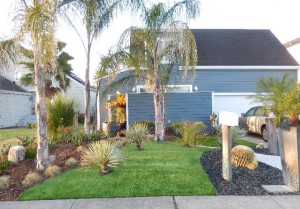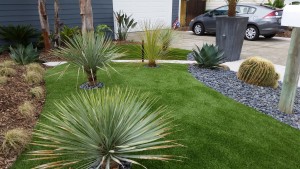Jonathan Smith, Bradley Real Estate
Common Interest Development (“CID”) sales in Marin are strong and prices are soaring (see, August 8th Marin IJ article). What exactly are CIDs? What are some of the benefits of CID ownership? What are some special considerations to keep in mind when considering the purchase of a CID? This article tackles these questions and more.
What is a Common Interest Development?
The simplest definition is: a housing complex where owners share in the ownership of common areas.
Essential characteristics of a common interest development
The essential characteristics are:
- Common ownership of private residential property;
- Mandatory membership of all owners in an association that manages the use of the common property;
- Governing documentsthat outline the procedures for governing the association as well as the rules which the owners must follow; and
- Owner assessments to finance the operation of the association and maintenance of the association common areas.
Types of common interest developments
- Condominiums
- Planned Developments or PUDs
- Stock cooperative
- Community apartment project
The two most common forms of common interest developments in California are:
1) Condominiums
With a Condominium, the owner of a condominium unit generally owns 100% of the unit and a fractional interest in all common areas of the condominium project.
2) PUDs
With a PUD, the PUD owner will own the lot along with the added structure and improvements. Also, PUD owners receive rights and easements to use in common areas owned by their homeowner’s association.
Fun Fact:
Don’t judge a book by its cover! Generally speaking, you cannot determine what type of CID a dwelling may be simply by looking at the physical characteristics of the building. So, a townhouse might legally be a condominium, a unit or lot in a PUD, or a single-family residence.
Benefits to owning a common interest development
Benefits of owning a CID include:
– often more affordable than a single family residence
– lower maintenance time and expense for owner
– access to attractive amenities, such as: pools, exercise facility, game rooms, rooftop decks
– heightened security and safety due to close proximity to neighbors
– governing documents help with keeping neighbors accountable to an agreed upon set of rules
Special considerations in purchasing a common interest development
- Governing Documents Review: All documents MUST be closely reviewed by a person with expertise and familiarity with association related documents, including: Articles of Incorporation; By-Laws; Conditions, Covenants & Restrictions (“CC&Rs”); Reserve studies; Operating budgets; and Meeting minutes
- Community Inspection: In addition to inspecting the specific unit or lot for purchase, it is very important to inspect the community as a whole for issues such as: A) Condition of the community buildings; B) Attractive amenities in disrepair; and C) obvious nuisances (e.g., cars blocking driveways)
- HOA Board and Management Company: Pay close attention to all communications with the association and management company. Are they: responsive, courteous, and helpful OR do they seem: difficult, evasive, or inconvenienced? Also, if available, it is a good idea to check for public information available on the management company (e.g., Internet, owners)
- Association Financial Management: Are monthly assessments either above or below the average monthly assessments for the area and CIDs with similar amenities/responsibilities? Pay attention to monthly assessments as they can sometimes be a red flag to financial mismanagement; also, pay close attention to reserve account funding percentage – if low, a heightened possibility for a special assessment exists (e.g., $25,000 per unit assessment)
- Insurance and Financing Concerns:
Special insurance for CIDs: Check with Governing Documents to determine insurance responsibility and work with an experienced insurance professional to make sure you are covered
Financing for CIDs: Lenders evaluate both you and the association, so actual rates may vary drastically from the advertised rates. Accordingly, working with someone who understands the financing of CIDs is another good idea.
 Jonathan G. Smith
Jonathan G. Smith
Bradley Real Estate
www.jonathanofmarin.com | jonathan@jonathanofmarin.com | 415-944-0632
Broker Associate for Bradley Luxury Division and Trusted Real Estate Counsel







